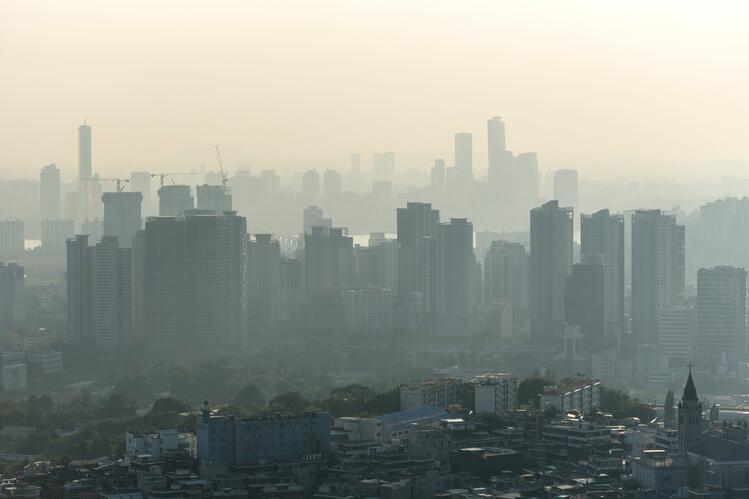Illinois study identifies atmospheric and economic drivers of global air pollution

Carbon monoxide emissions from industrial production have serious consequences for human health and are a strong indicator of overall air pollution levels. Many countries aim to reduce their emissions, but they cannot control air flows originating in other regions. A new study from the University of Illinois Urbana-Champaign looks at global flows of air pollution and how they relate to economic activity in the global supply chain.
“Our study is unique in combining atmospheric transport of air pollution with supply chain analysis as it tells us where the pollution is coming from and who is ultimately responsible for it,” said lead author Sandy Dall’erba, professor in the Department of Agricultural and Consumer Economics (ACE) and director of the Center for Climate, Regional, Environmental and Trade Economics (CREATE), both part of the College of Agricultural, Consumer and Environmental Sciences (ACES) at Illinois.
“There is a direct link between a country’s level of production and how much air pollution is emitted. But production may be driven by demand from consumers in other countries. We use supply chain analysis to quantify the links between production and consumption. This helps us to understand how production in one country is linked to domestic and foreign demand,” he added.
The researchers traced the movement of pollutants through the atmosphere to understand the flow of emissions, using simulations developed by Nicole RIemer, professor in the Department of Climate, Meteorology & Atmospheric Sciences, College of Liberal Arts & Sciences at Illinois. For analytical purposes, they divided the world into five sections: the United States, Europe, China, South Korea, and the rest of the world. South Korea is located downwind of China, and it serves as an example of how a small country can be affected by pollution from a much larger upwind neighbor.
“Over recent years, South Korea has taken several measures to reduce its own pollution, yet it has experienced worsening air quality. Why? The answer is to be found in its upwind neighbor, China. Yet, a large amount of the goods manufactured in China are destined for foreign consumers in the U.S. and in Europe, among other places. As such, who is to be blamed for the increase in air pollution in South Korea? That is the challenge we embarked on with this study,” Dall’erba stated.
The researchers found the amount of carbon monoxide emissions coming from China to South Korea increased from 30 teragrams (Tg) in 1990 to 42 Tg in 2014.
“To put these numbers in perspective, 5 Tg of carbon monoxide corresponds to the emissions from all of the cars in the U.S. – roughly 274 million – each driving 13,500 miles per year. So it’s definitely not a small increase. We conclude that South Korea has, in effect, lost control of their own air quality,” Dall’erba explained.

Dall’erba and his colleagues conducted a structural decomposition analysis to identify the economic drivers of carbon monoxide emissions in the five study regions. They found that while China’s technological processes to reduce pollution have improved, overall carbon monoxide emissions have gone up because the country’s production has increased.
Next, the researchers sought to identify where the demand that drives the increased production comes from. In China’s case, some of the increase can be attributed to U.S. and European demand, but it is primarily driven by households in China. The Chinese population grew considerably between 1990 and 2014, and the country became wealthier, leading to higher consumption, Dall’erba noted.
“Our findings show that pollution is a global concern that can’t be solved by individual countries. The world is connected, and we’re all in this together,” said co-author Yilan Xu, associate professor in ACE. “Pollution in one country can result from economic activities in neighboring countries, which in turn is influenced by who's demanding the goods produced in that country. Pollution emitted anywhere in the world is going to have consequences all over the world to varying degrees.”
Dall’erba, Riemer, and Xu emphasize that everybody can play a part in reducing emissions. Producers can implement technological change; policymakers can issue regulations or provide incentives; and consumers can make choices that favor sustainable products.
The paper, “Identifying the key atmospheric and economic drivers of global carbon monoxide emission transfers” is published in Economic Systems Research [doi.org/10.1080/09535314.2023.2300787]. Authors are Sandy Dall’erba, Nicole Riemer, Yilan Xu, Ran Xu and Yu Yao. The study was supported by a seed grant from the Institute for Sustainability, Energy, and Environment (iSEE) at Illinois.